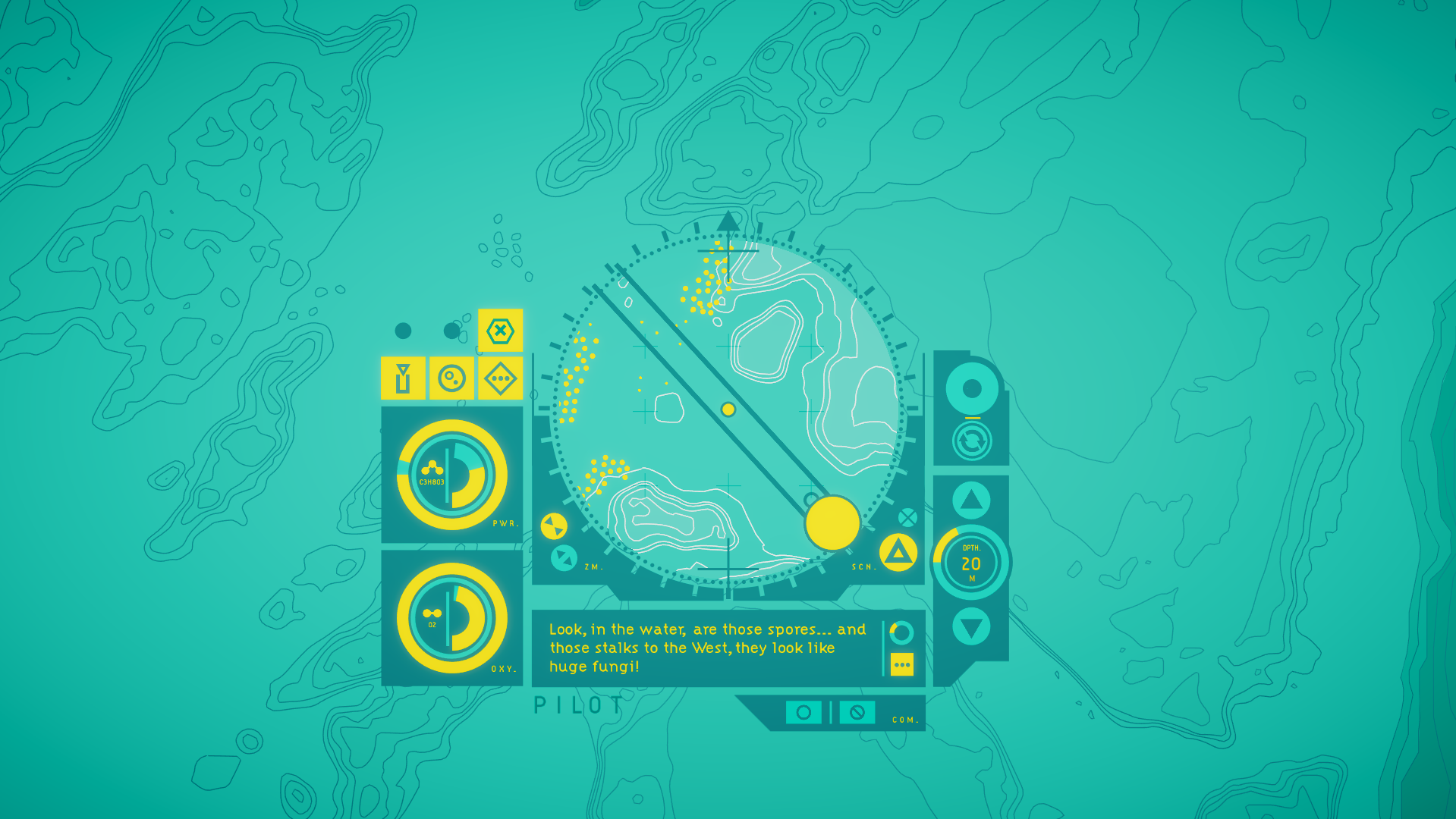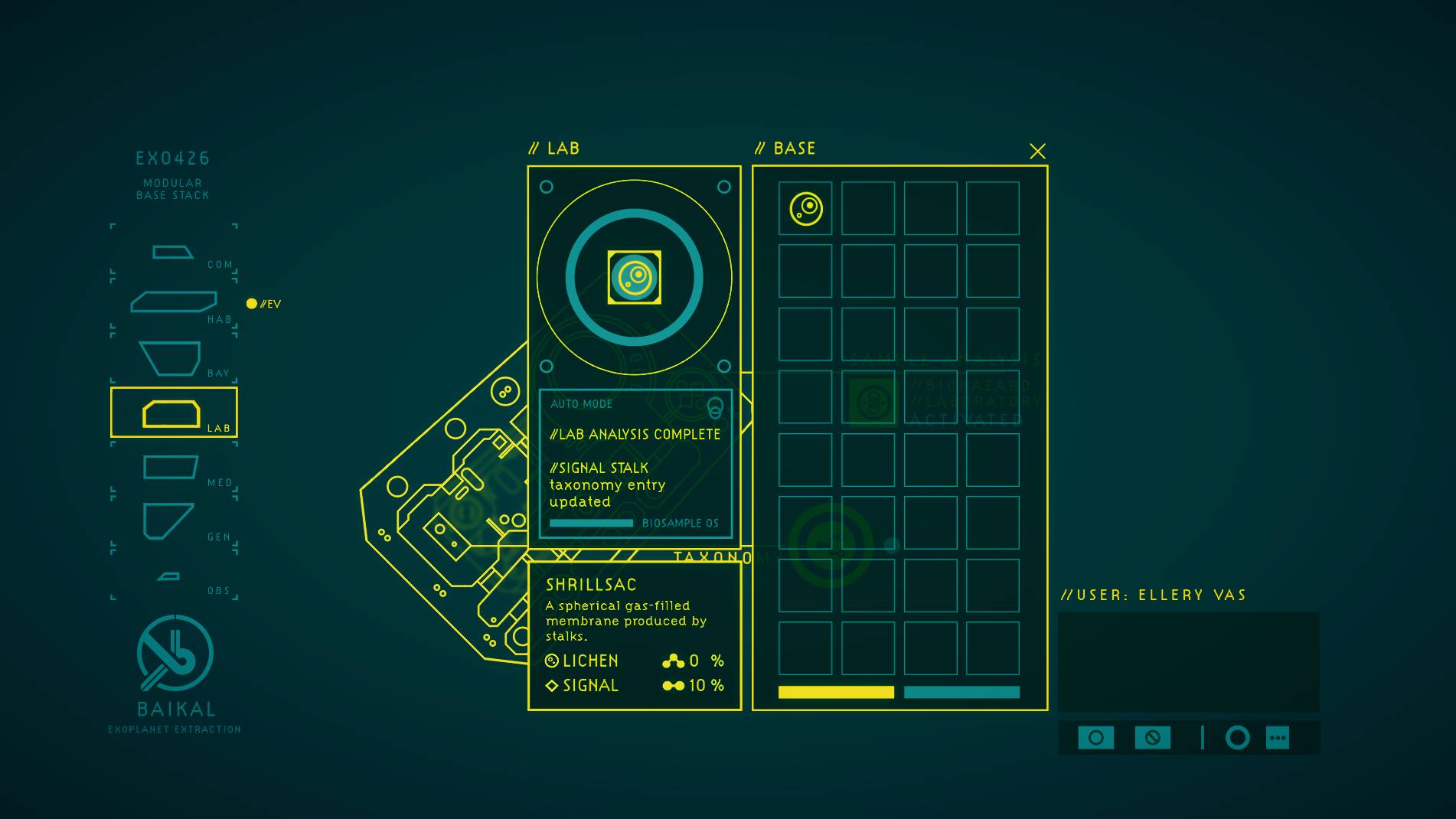In Other Waters lets you explore the strange depths of a thriving alien ocean
Gareth Damian Martin's sci-fi eco-system has incredible depth.

Underneath the waves of a turquoise ocean lies an alien ecosystem, thriving and full of life. Earth, on the other hand, is slowly dying. Toxic and destructive pollutants slowly poisoning the creatures and life that inhabit it. Earth is in a crisis, but a solution might be hidden away on this flourishing alien planet and In Other Waters plunges you into its unknown depths. After playing the thirty-minute demo, it's amazing to see how developer Gareth Damian Martin can create such world depth from a computer interface and vivid text descriptions. In Other Waters is an adventure game that creates a space for player's imaginations to go wild.
You're the AI of an underwater diving suit currently occupied by Ellery Vas, a xenobiologist who is on an expedition to map the alien lifeforms of this uncharted ocean. The strange life forms that exist in this ocean aren't the only mysteries to be explored, Ellery is also trying to uncover what happened to her fellow scientist, Minae Nomura, who disappeared on a previous mission.
Your role as the AI that controls the suit's systems is also mysterious. Ellery doesn't recognise exactly what you are—you don't even know what you are—but you can reply to her questions with a simple yes or no answer, meaning you at least have the capacity to make decisions. With more pressing matters Ellery leaves it, but there's no doubt this mystery will develop through the game. For now, a whole world of alien life is waiting to be explored.

The visuals of In Other Waters depict a clean and minimally designed computer interface. The centre shows your surroundings, an array of dots, symbols, and lines representing the rocky depths. The interface lets you scan the environment, chart your passage through the water, and take samples of the alien fauna and flora you come across. It's clear and concise making it easy to learn. Before I knew it, I could work my way around the sleek interface, interacting with its various buttons and maps. Your main actions are moving and scanning, and as you navigate through the underwater landscape Ellery will take notes, writing down her observations about the creature or plant life you're examining.
Ellery's notes not only describe what a creature looks like but also give valuable insight into how it fits into the wider ecosystem. After naming and logging each species she will also make observations, like commenting on the humming between the Singstalk fungi or analysing how the creatures with translucent shells communicate with each other. Even when she doesn't know, she'll make educated guesses, like speculating whether the fungi's release of small bubbles could be a signal system.
Ellery acts as your eyes, her descriptions conjure up a vivid world so that you can see it too. It's amazing how Martin can use a few lines of text to conjure such a fantastical world with an intricate ecosystem.

At one point I saw a dot moving speedily across the screen and my instincts prepared me for the worst—that's it. I'm dead. It's going to eat me. Goodbye lovely alien world. But after hastily clicking on it, Ellery calms my fears. Apparently it's just a small, flapping jellyfish-like creature who has the zoomies. The fungi and creatures of this part of the ocean are friendly and relaxed, but it makes me think about what other parts of this unknown world we'll get to see in the full game.
Keep up to date with the most important stories and the best deals, as picked by the PC Gamer team.
As you explore you can hear little chirps and lulls of creatures, their noises reverberating like you're hearing them through underwater sonar.
Another feature that pulls you into the alien world of In Other Waters is its sound design. Amos Roddy combines a warm synth soundtrack with sounds of an alien ocean to place you within the space of a diving suit. It sounds incredible. As you explore you can hear little chirps and lulls of creatures, their noises reverberating like you're hearing them through underwater sonar. As you plunge deeper into a cavern the soundscape adjusts to feel like it's diving down with you. Alongside the subtle noises of the computer interface, it all creates a vivid rich soundscape. I can't help but think that the soundtrack could easily make for some great ASMR listening.
The demo also shows what the research base looks like and what you can do inside. You can access the laboratory, analyse all the weird samples you've collected from your expedition, and read the crew log to get an insight into the character's minds. The most exciting part of the base is the Taxonomy log, which keeps a detailed list of all of the life and ecology you have encountered. In the demo, it's understandably empty, but in these spaces, my imagination goes wild. Alongside fungi, there are logging spaces for bacteria, plants, and even animals which sets my mind racing thinking about what else Martin has beneath these alien waves.

In Other Waters captures the excitement of old text adventure games. When I read a description of a creature or location it just conjures a world in my mind. I'm thinking of the colourful alien plant life of the The Shimmer from Annihilation or the weirdly wonderful creatures that live at the deepest parts of our own ocean. In Other Waters does not currently have a release date, but I'm excited to discover more about its subaquatic ecosystem.
Rachel had been bouncing around different gaming websites as a freelancer and staff writer for three years before settling at PC Gamer back in 2019. She mainly writes reviews, previews, and features, but on rare occasions will switch it up with news and guides. When she's not taking hundreds of screenshots of the latest indie darling, you can find her nurturing her parsnip empire in Stardew Valley and planning an axolotl uprising in Minecraft. She loves 'stop and smell the roses' games—her proudest gaming moment being the one time she kept her virtual potted plants alive for over a year.


